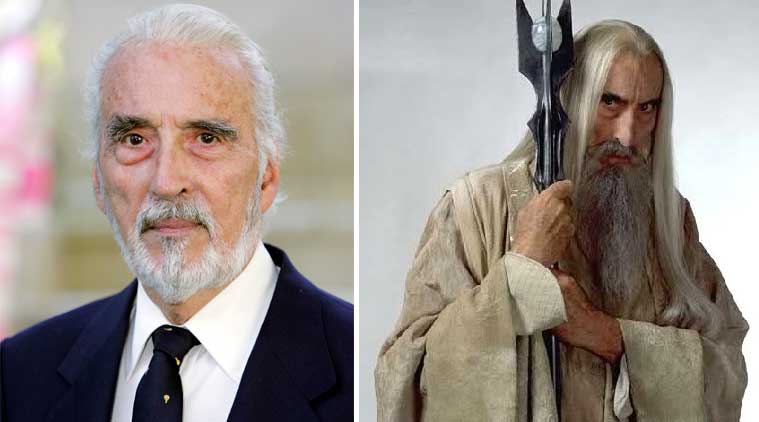Opinion The Count is dead
Lee was a lot else besides Dracula, including a British World War II veteran, but the Count has only that single enduring identity outside of Bram Stoker’s novel.

 Christopher Lee
Christopher Lee
Christopher Lee, “the villain of many horror films who later acted in the Star Wars prequels and the Lord of the Rings series…” Let’s not get put off by descriptions like these, which have come up since Lee’s death; the latter part is possibly necessary to help younger film-watchers identify who Lee was. His cult devotees will always know that Count Dooku or Saruman was not who he really was. To say even that Lee was Count Dracula would be doing him an injustice. It’s Dracula who is Christopher Lee.
Lee was a lot else besides Dracula, including a British World War II veteran, but the Count has only that single enduring identity outside of Bram Stoker’s novel. Because of the sheer number of Dracula films Lee did, and the crucial phase when he did them, Bela Lugosi isn’t to Dracula what his contemporary Boris Karloff is to Frankenstein’s monster. Lee played that creature too, in 1957, the year before Hammer Films would cast him in the first of many Dracula roles.
 Lee’s Horror of Dracula (1958) doesn’t enjoy the iconic status of Lugosi’s Dracula (1931) or Max Schreck’s 1922 silent masterpiece, Nosferatu, but it is more accessible. His later, trashier Dracula offerings are even more so. Film history plays a large part in that accessibility. Western cinema underwent a transition from the late 1960s through the ’70s, with Hollywood filmmakers dropping the self-imposed Hays Code of censorship. With sleaze no longer taboo, it reflected differently in horror films from different countries.
Lee’s Horror of Dracula (1958) doesn’t enjoy the iconic status of Lugosi’s Dracula (1931) or Max Schreck’s 1922 silent masterpiece, Nosferatu, but it is more accessible. His later, trashier Dracula offerings are even more so. Film history plays a large part in that accessibility. Western cinema underwent a transition from the late 1960s through the ’70s, with Hollywood filmmakers dropping the self-imposed Hays Code of censorship. With sleaze no longer taboo, it reflected differently in horror films from different countries.
The Americans stuck largely to atmospheric horror with The Exorcist and The Omen; mindless gore would follow in the 1980s with the Friday the 13th, Evil Dead and Elm Street series. The French launched “the world’s first sex-horror film”, The Blood Rose, in 1969, followed by a string of Jean Rollin horrors. The Italians had the gory “giallo” sub-genre, which flourished with the addition of horror elements, most notably in Dario Argento’s Deep Red (1975) and Suspiria (1977), which is more horror than giallo. The Spaniards had arthouse-horror-sleaze master Jess Franco who, in the 1960s, had cast Lee as Fu Manchu in a series of adventure films and who turned to him again for Eugenie… the Story of her Journey Into Perversion (1970), a “sex-horror film” based loosely on the Marquis de
Sade’s writings.
The British had Hammer Films. And Hammer had Lee.
In an era when creepy atmosphere had given way to cheap shocks, the 6-foot-4 Dracula’s eyes glowed red and his fangs dripped blood, all of it beautifully shot with the cinematography that Hammer in its heyday was renowned for. Also, the 1970s coincided with the arrival of the videocassette. The following decade, when the rest of the world, including India, caught up with the video boom, the market was flooded with Lee’s Dracula films. All of which contributed to the cult status he would achieve.
The flood also showed his versatility. There were British horrors besides Dracula, some dating back to the 1960s, such as Dr Terror’s House of Horrors. Also in the 1960s, giallo/ horror pioneer Mario Bava had cast Lee in The Whip and the Body. Lee’s classiest horror must be The Wicker Man (1973), atmospheric rather than gory. A great deal sleazier is To the Devil a Daughter (1976) with Nastassja Kinski, then 15, daughter of another cult actor, Klaus Kinski. And beyond horror, Lee was Sherlock Holmes for Billy Wilder in 1970, Comte de Rochefort in the 1973 version of The Three Musketeers, and Bond villain Scaramanga alongside Roger Moore in 1974.
When the Rings and Star Wars roles came, they couldn’t possibly have added anything to an identity already established. Even Frankenstein’s monster, Holmes and Scaramanga hadn’t done that. In Lee’s passing, the single biggest loss to cinema is that Count Dracula is finally dead.
kabir.firaque@expressindia.com





